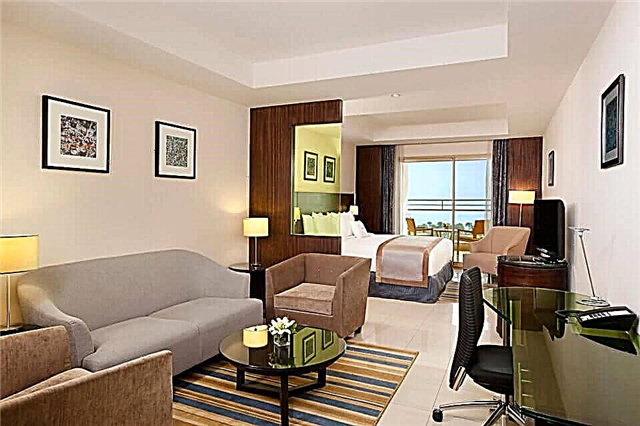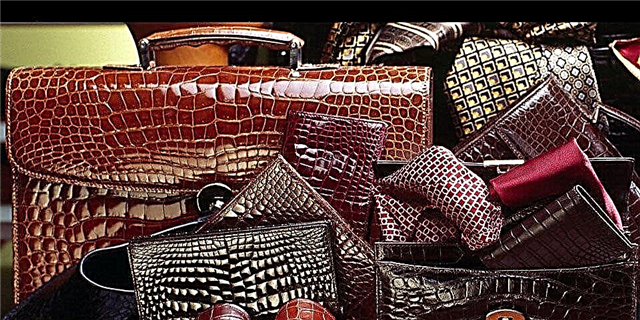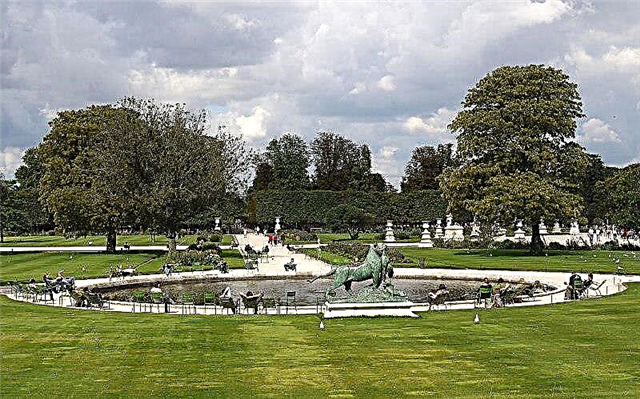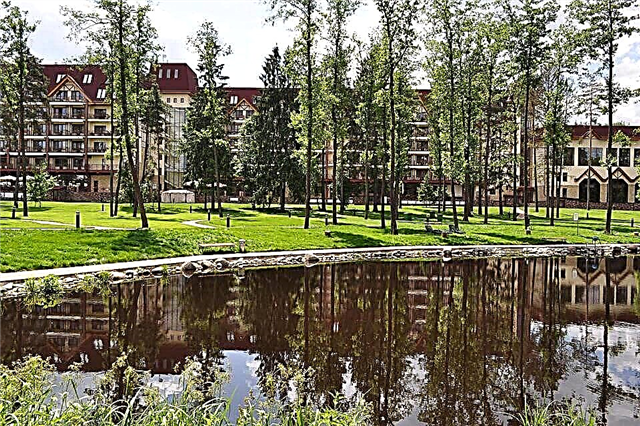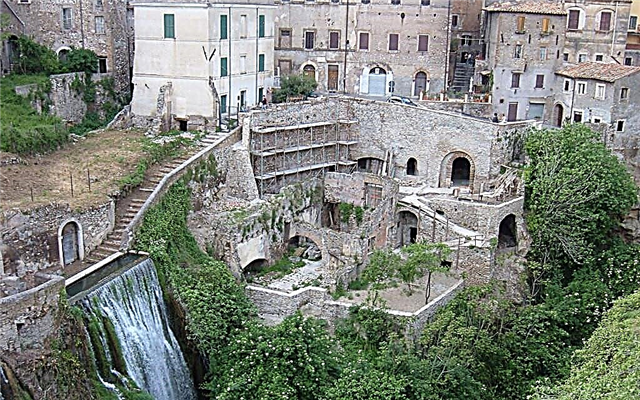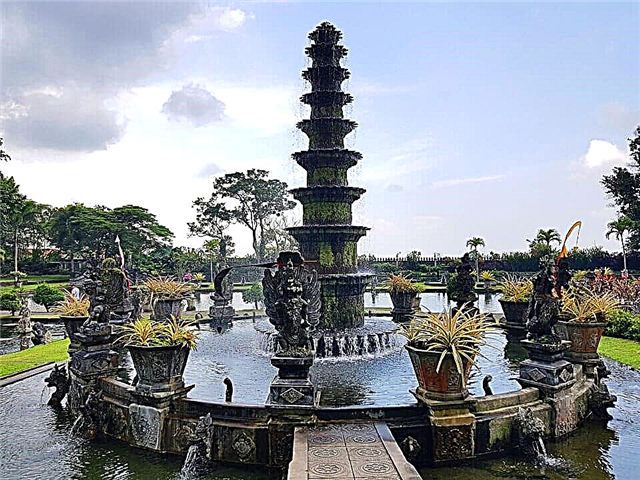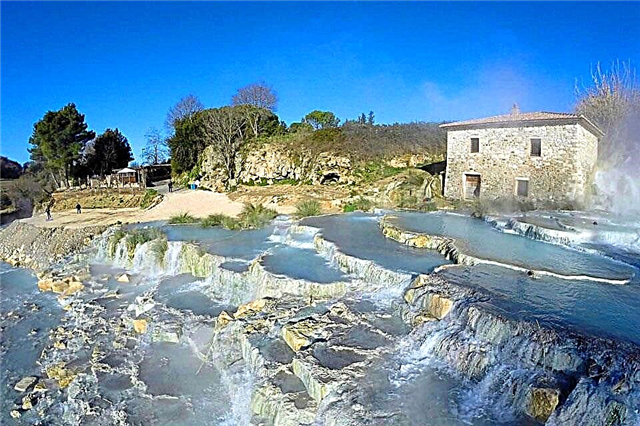Address: Russia, Moscow, Bolshaya Yakimanka street, 46
Construction date: 1704 - 1713
Shrines: the icon of the Mother of God of Vladimir, the icon of the mchch. Guria, Samona and Aviv, the icon of the martyr. John the Warrior with a life, an icon of righ. Joachim and Anna, an icon and a part of a finger with a ring of the VIC. Barbara, the icon of St. Basil the Blessed, the image of the Savior of Smolensk, the image of St. Nicholas, the icon of St. Anna Kashinskaya with a particle of relics, an icon of St. Seraphim of Sarov with a particle of relics, particles of over 150 saints of God in the arks and in icons, a similar icon of the schmch. Christopher (Nadezhdina)
Coordinates: 55 ° 43'58.0 "N 37 ° 36'39.6" E
Content:
An elegant church has been decorating the center of the Russian capital since the reign of Tsar Peter I. The bright temple attracts the attention of anyone who drives or walks along Leninsky Prospekt. It has never been closed for believers, so services have been held here for more than 300 years.

How the church was built
For the first time, the Church of John the Warrior was written about in 1625. In the documents of that time it is called “the temple of John the Warrior”. The wooden church stood on the right bank of the Moscow River, approximately in the place where the building of the Central House of Artists is now located. The low-lying coast created many problems. After the spring flood, the river was filled with melt water, and the temple was heated.
The archers considered John the Warrior to be their patron, so in 1671 they demolished a dilapidated wooden church and built a new stone church. At the end of the 18th century, the archers staged a revolt against the king. The young Tsar Peter I brutally suppressed the uprising and abolished all the rifle regiments. Some of the rioters were publicly executed at Execution place, and the rest, along with their families, were evicted from the city. The Church of John the Warrior was left unattended and empty.
In the summer of 1709, the river in Moscow overflowed so much that it flooded all the surrounding streets. According to legend, after the victory in the Battle of Poltava, Peter I returned to Moscow along the Kaluga road. On Yakimanka, a depressing sight appeared before the eyes of the tsar - an Orthodox church almost flooded with water.

When the emperor was told that this was a half-abandoned church of the martyr John the Warrior, he was very upset and ordered to build a new temple of stone, on a hill, next to the Great Road. A couple of months later, Peter I contributed 300 rubles for the construction and brought a detailed drawing of the future church.
A plot of land was allocated for the construction of a church with a churchyard, which consisted of a wasteland and the former lands of disgraced archers. The project of the building was prepared by the favorite architect of the tsar Ivan Petrovich Zarudny, and the clergyman Alexei Fedorov took over all the household chores.
In 1717 the new church was ready. On the day of its consecration, the sovereign presented the parish with a large painting with the text "A pharmacy that cures sins", precious liturgical vessels and a heavy weight on an iron chain. So that the unusual gift of the king was visible to everyone, the weight was hung near the entrance to the prayer hall.
Defender of all the offended
The saint revered by believers lived in the 4th century, when Christians were persecuted. John served the Roman emperor Julian, but he tried to help all Christians. For this, John was arrested and imprisoned. He managed to be released only after the death of the emperor. The defender of the early Christians led a pious life and managed to live to a ripe old age.

Church in the XIX-XX centuries
Zamoskvorechye was one of the richest districts of Moscow. Merchants lived here, who willingly made donations for temples. For this reason, by the middle of the 18th century, the welfare of the parish increased. The church became three-altar, and it was surrounded by a patterned wrought-iron fence on a solid brick foundation.
The famous Russian architect Vasily Bazhenov made a new iconostasis in the church, and the painter Gavriil Domozhirov painted the walls with multi-colored frescoes. Unfortunately, the early decoration of the Church of St. John the Warrior was lost in the 19th century.
Great damage to the temple, as well as to the whole city, was caused by the war with the French in 1812. French soldiers broke down the locked gates and brought their horses into the church. Fortunately, the enemies did not get the precious liturgical vessels. They managed to hide them in the basement under the altar before the arrival of Napoleon's troops in Moscow.
The strongest fire that engulfed the city also spared the ancient temple. The flames burned down almost all the houses on Yakimanka and in the surrounding lanes, but stopped right in front of the church gates.

After the enemy left, all the thrones were consecrated anew. Thanks to the rich donations and efforts of the parishioners, the interior of the temple and the lost utensils were quickly restored.
At the beginning of the last century, Archpriest Christopher (Nadezhdin) became the rector of the church. Under him, the temple celebrated its 200th anniversary. Metropolitan Vladimir of Moscow conducted a solemn divine service for the parishioners.
After the revolution, the church continued to function. In the 1920s, the territory Of Russia hunger struck. The inhabitants of the Volga villages were especially hard hit, so the government of the young country decided to conduct a campaign to confiscate church valuables. Gold, silver and works of art were sold abroad, and the proceeds were used to buy bread for the hungry.
In 1922, a denunciation was written against Archpriest Christopher. The abbot of the temple was accused of resisting the authorities, refusing to hand over the liturgical utensils from the Church of John the Warrior, and supporting Patriarch Tikhon in everything. At the end of March, the priest was arrested, and in June he was shot on the verdict of a revolutionary military tribunal.

During the years of the active struggle of the Soviet government with religion, valuables were brought to the Church of John the Warrior from closed churches and monasteries in Moscow and The Kremlin... At this time, two icons came here, which previously adorned niches. Nikolskaya and Spasskaya towers The Kremlin.
In 1928, a luxurious five-tiered iconostasis from the demolished Church of the Three Saints near the Red Gate was installed in the building. A little later, ancient icons from the temple of the Monk Maron the Hermit were placed in the church, Church of the Intercession on the Red Square and the blown up Kazan Cathedral on Kaluga Square.
Architectural features
The old church can be attributed to the most beautiful cathedrals and temples in Moscow. The architecture of the temple on Yakimanka is harmoniously intertwined with the best traditions of Ukrainian and Moscow baroque. A closer look at the colorful "gingerbread" facades shows the influence of European architecture, which appeared in Russia during the reign of Peter I.

The bright red and white was built by a "ship" - the bell tower, the refectory and the temple are stretched in one line from west to east. The plastic of the temple is very expressive. The building is decorated with curly platbands, carved cornices, balusters, pilasters and neat little balconies.
The base of the temple - an octagon on a quadrangle - has an original engineering solution that resembles an elegant rotunda. The high bell tower ends with an octagonal drum, and delicate crosses flaunt on the faceted gilded chapters.
The territory of the temple is surrounded by a beautiful metal fence on brick pillars. Above the entrance gate, you can see a large mosaic depicting the Martyr John the Warrior.
Interiors and shrines
Inside, the church is very spacious, light and looks like a precious box. It is richly decorated with figured stucco moldings, ornaments and frescoes.

The magnificent carved iconostasis has five tiers and shines with noble gold. Near this iconostasis, the future poet Mikhail Lermontov was baptized. The funeral rites of the famous General Mikhail Skobelev, the talented pianist Svyatoslav Teofilovich Richter and the composer Alfred Garrievich Schnittke were performed here.
The Church of John the Warrior is three-altar. The main altar is dedicated to John the Warrior, the south altar is consecrated in memory of the Christian martyrs Samon, Aviv and Guria, and the north - in honor of Bishop Demetrius of Rostov. The main shrine is considered to be the temple image of John the Warrior, which was painted in the middle of the 17th century.
Many believers come to pray before the icon of St. Barbara, which came here from the Church of St. Barbara the Great Martyr on Varvarka. For this image, a separate chapel was arranged in the church. Particles of relics of more than 150 saints are placed in the icons and arks in the altar. During Christian holidays, they are taken out to the believers.
Useful information for tourists and pilgrims
The doors of the temple are open on weekdays from 7:30 to 19:00, and on Sundays and holidays from 6:30 to 19:30. Services are held twice a day - at 8:00 and 17:00. There is a Sunday school for the children of parishioners, and there is a youth choir. In addition, classes are held in the church for everyone who wants to learn to read in the Church Slavonic language.

How to get there
The church stands in the city center, not far from the Gorky Central Park of Culture and Leisure, on Bolshaya Yakimanka Street, 46. From the Oktyabrskaya metro station, you can walk to the temple in 5-7 minutes.

